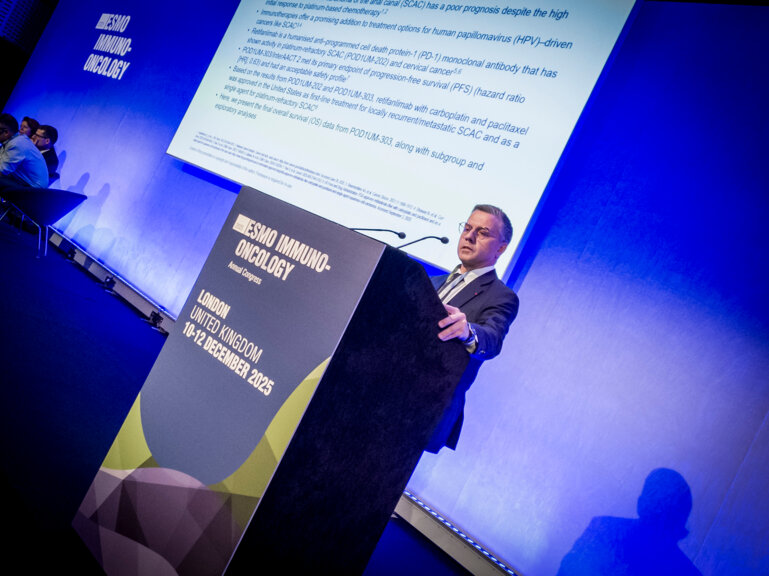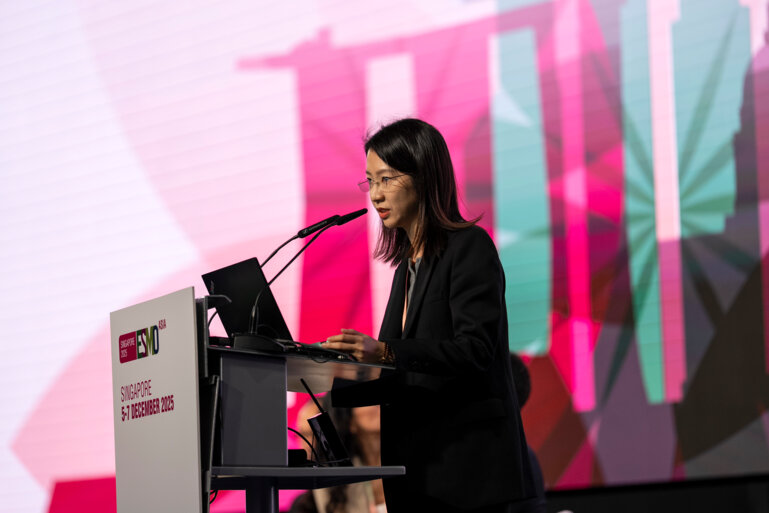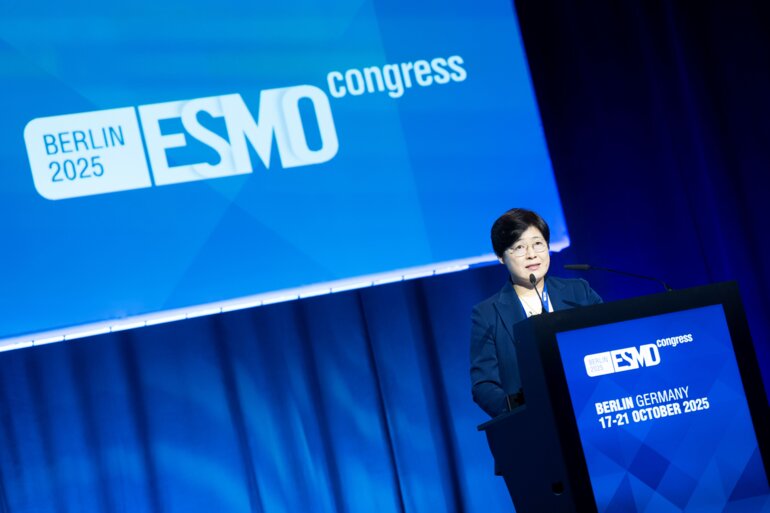Recent research shows that molecular monitoring is key to identify a patient-tailored window of opportunity for rechallenge
Tumour heterogeneity and clonal evolution are central to the development of anti-EGFR treatment resistance in metastatic colorectal cancer (mCRC). The emergence under selective pressure from cetuximab or panitumumab of KRAS, NRAS, BRAF and EGFR extracellular domain mutations, among other molecular alterations, leads to loss of response despite initial efficacy. Importantly, several studies have demonstrated that upon treatment discontinuation, resistant subclones may decay over time, restoring sensitivity to EGFR blockade and thus opening the door to anti-EGFR rechallenge in selected patients (JAMA Oncol. 2019;5:343–350; Nat Med. 2015;21:795–801; Nat Med. 2022;28:1612–1618; Ann Oncol. 2019;30:243–249).
However, the dynamics of clonal decay and resensitisation are highly patient-specific. The timeline for disappearance of resistance-conferring mutations can vary widely depending on prior therapy duration, tumour burden and selective pressure from intervening regimens. Therefore, molecular monitoring is essential to ensure that transient resistance features have indeed vanished in order to identify the optimal window of opportunity for rechallenge in every patient.
In this context, circulating tumour DNA (ctDNA) has emerged as the ideal biomarker strategy to guide EGFR reintroduction since liquid biopsy enables longitudinal and minimally invasive tracking of tumour evolution, capturing the heterogeneous and dynamic nature of resistance across lesions. Three studies presented at the ESMO Congress 2025 (Berlin, 17–21 October) collectively advance our understanding of ctDNA-guided EGFR rechallenge.
In the randomised phase II CITRIC trial, patients with RAS/BRAF wild-type mCRC and ctDNA-confirmed clearance of resistance mutations were rechallenged with cetuximab plus irinotecan (LBA33). Compared with standard of care regimens, this approach achieved a statistically superior disease control rate (DCR) and numerically superior progression-free survival (PFS) and objective response rate (ORR). Moreover, CITRIC also employed a hyper-selection molecular panel that incorporated less common resistance drivers, showing that a refined treatment allocation can maximise rechallenge-derived benefits.
The PARERE study aimed to elucidate the best sequencing strategy for anti-EGFR retreatment within the continuum of care (LBA32). In patients with chemotherapy-refractory, RAS and BRAF wild-type mCRC and no detectable resistance alterations on ctDNA, rechallenge with panitumumab followed by regorafenib was compared to the opposite treatment sequence. Notably, on the one hand, PARERE did not identify a single superior sequence overall in terms of overall survival (OS), except for patients with an anti-EGFR-free interval ≤6 months, in whom the regorafenib-first sequence yielded better outcomes. On the other hand, PFS, ORR and DCR were superior in the panitumumab treatment phase, regardless of treatment sequence, with overall better tolerability.
Also presented at the ESMO Congress, a third study addressed the crucial question of defining a ctDNA cut-off for resistance (Abstract 728MO). Researchers reported that low-frequency resistance mutations did not preclude benefit from rechallenge but correlated with shorter survival. Patients with a relative mutation allele frequency (rMAF) ≤12.4% experienced significantly longer PFS and numerically longer OS than those above this threshold. These results suggest that, beyond the binary ‘mutation-negative’ versus ‘mutation-positive’ approach, quantitative ctDNA metrics such as rMAF may refine patient selection and risk stratification. Nevertheless, this threshold is likely assay- and mutation-specific, warranting further validation in larger cohorts.
Together, these data confirm that ctDNA is not merely a research tool, but rather a clinically actionable biomarker capable of steering therapy in real time. The biological rationale for anti-EGFR rechallenge is now robust, and ctDNA monitoring offers a practical framework to implement it. Yet several barriers remain before full clinical integration including assay standardisation, validation of platform-dependent MAF thresholds, and optimal timing for retesting and re-challenge (often 4–6 months), which should be prospectively defined based on clonal half-life data. In addition, reimbursement and inclusion in treatment guidelines are essential for a widespread adoption of this approach.
Programme details:
Germani MMM, et al. Panitumumab retreatment followed by regorafenib versus the reverse sequence in chemorefractory metastatic colorectal cancer patients with RAS and BRAF wild-type circulating tumor DNA (ctDNA): Final results of the randomized PARERE trial by GONO. ESMO Congress 2025 - LBA32
Montagut C, et al. Circulating tumor (ct) DNA-guided anti-EGFR rechallenge strategy in metastatic colorectal cancer (mCRC): Final results of the phase II randomized CITRIC trial. ESMO Congress 2025 - LBA33
Mascaró Baselga P, et al. Predictive value of low-frequency resistance mutations and relative mutant allele frequencies (rMAFs) in anti-EGFR rechallenge for RAS/BRAF wild-type (wt) metastatic colorectal cancer (mCRC). ESMO Congress 2025 - Abstract 728MO







